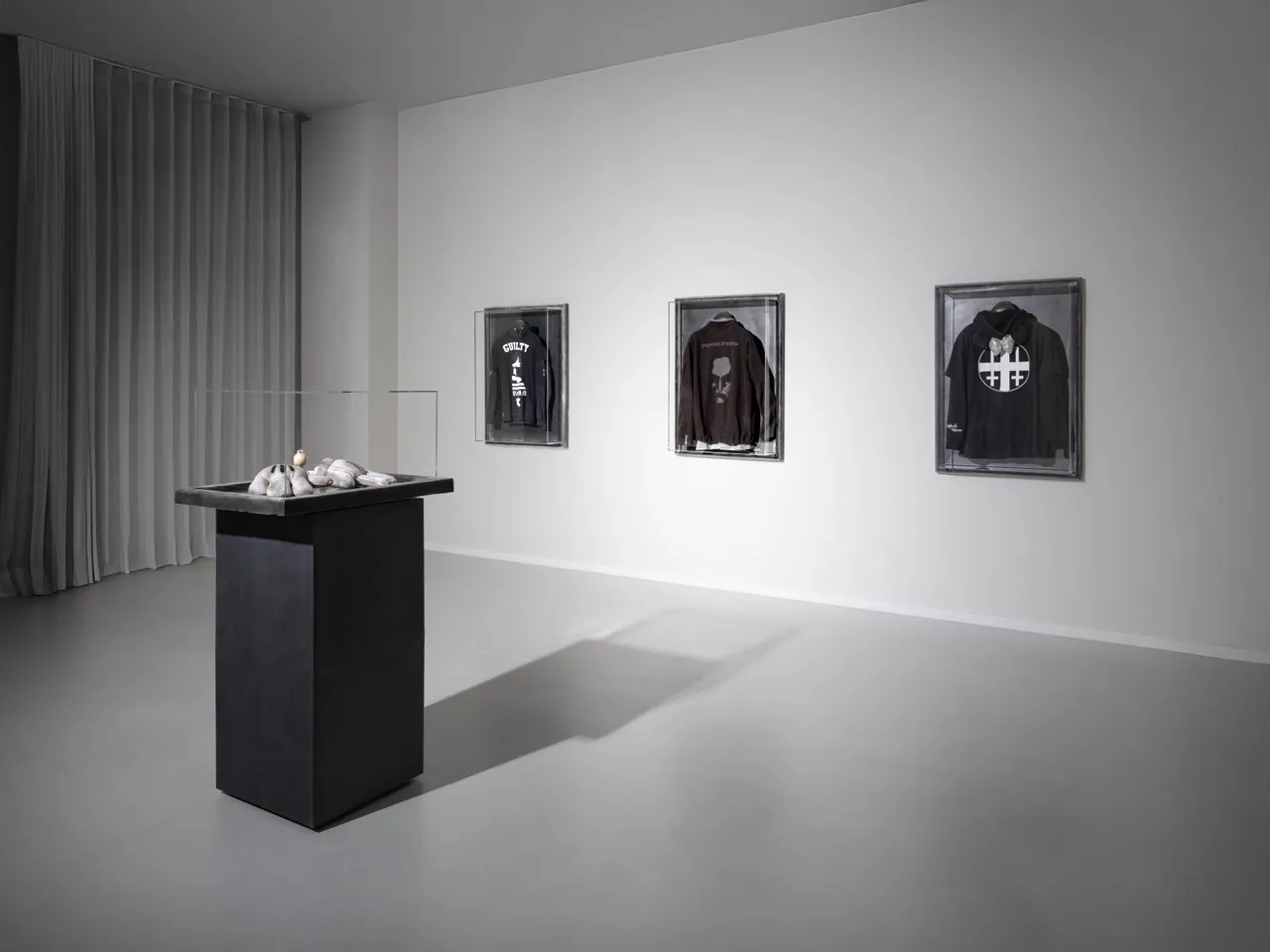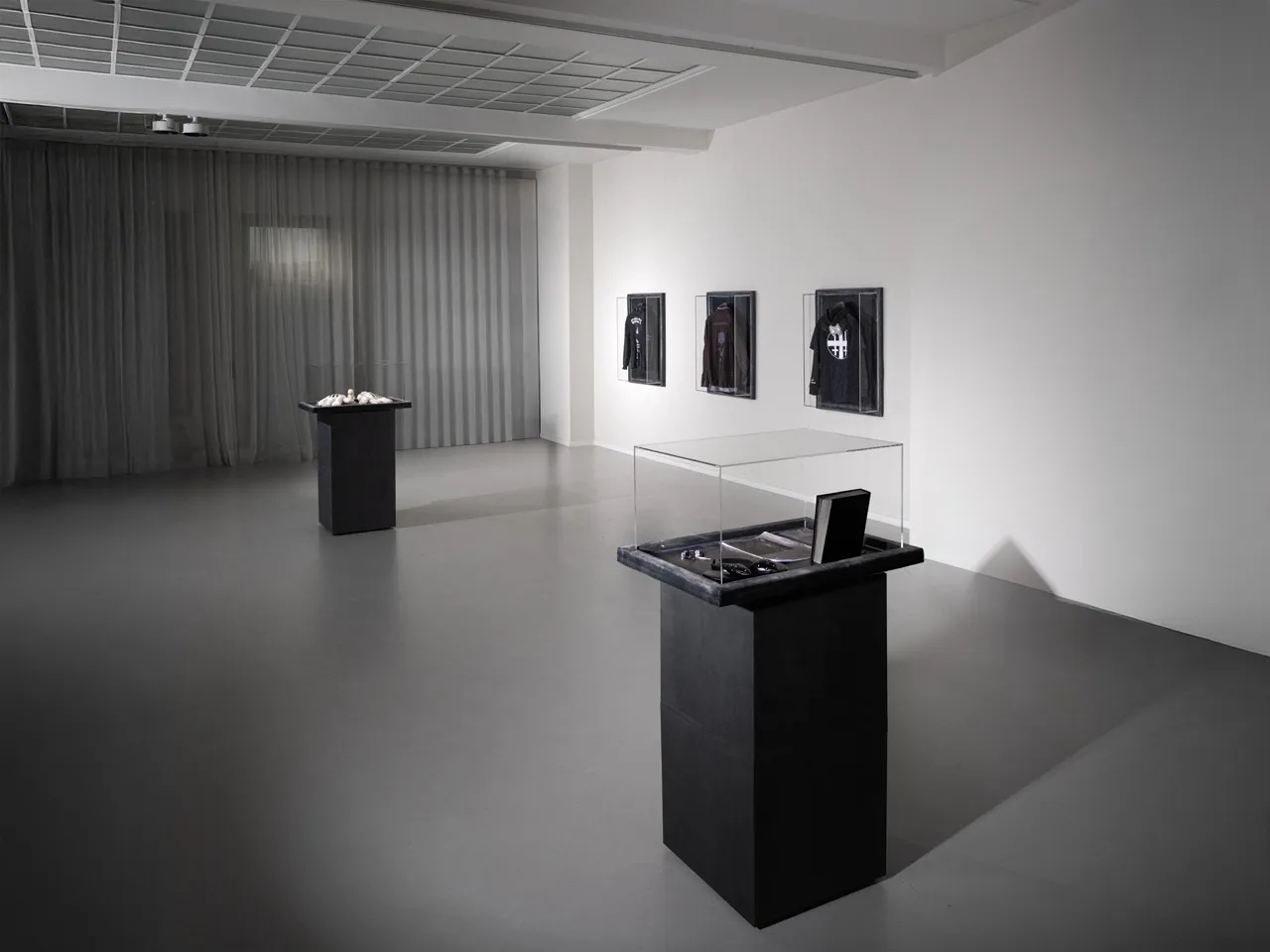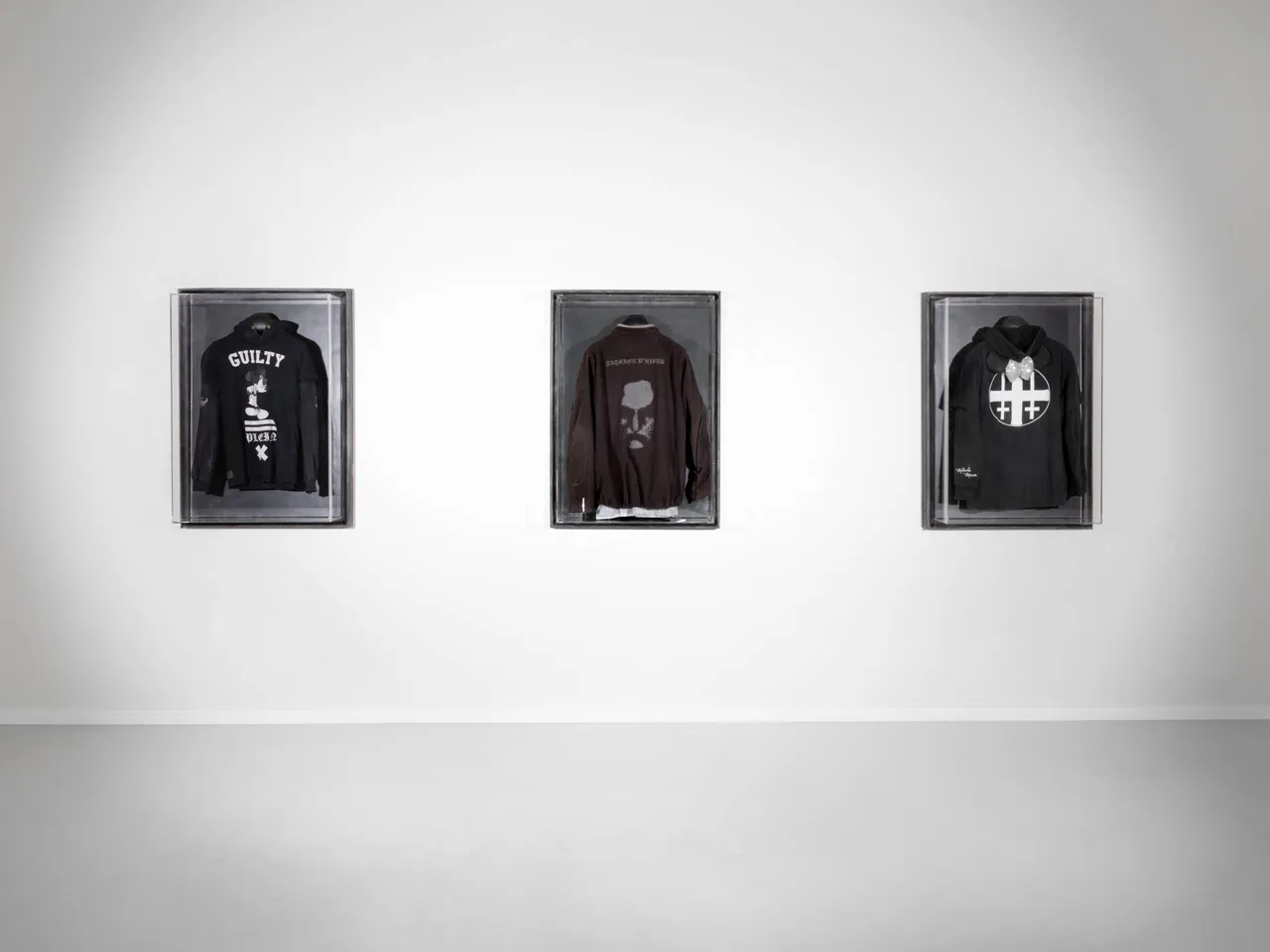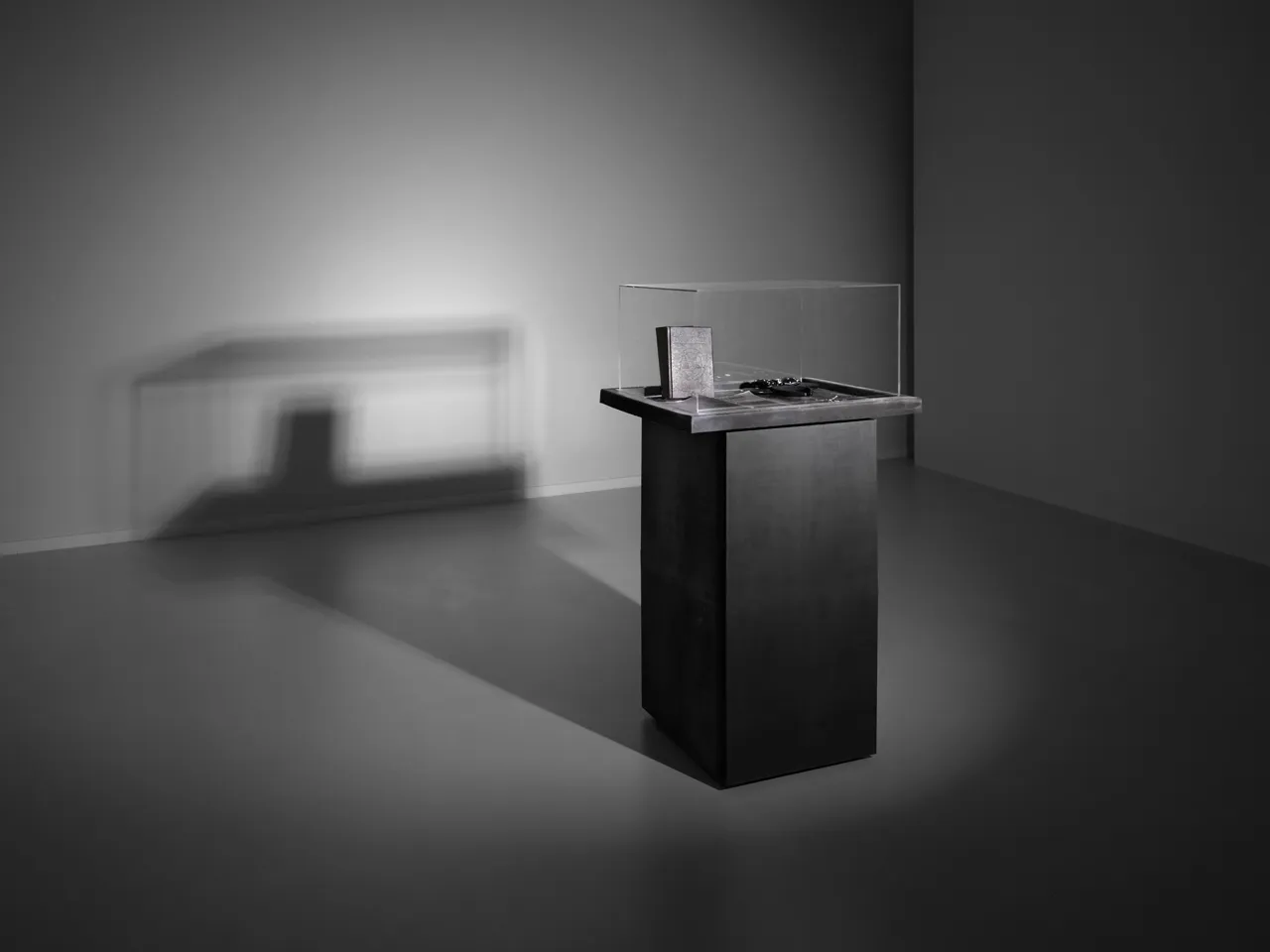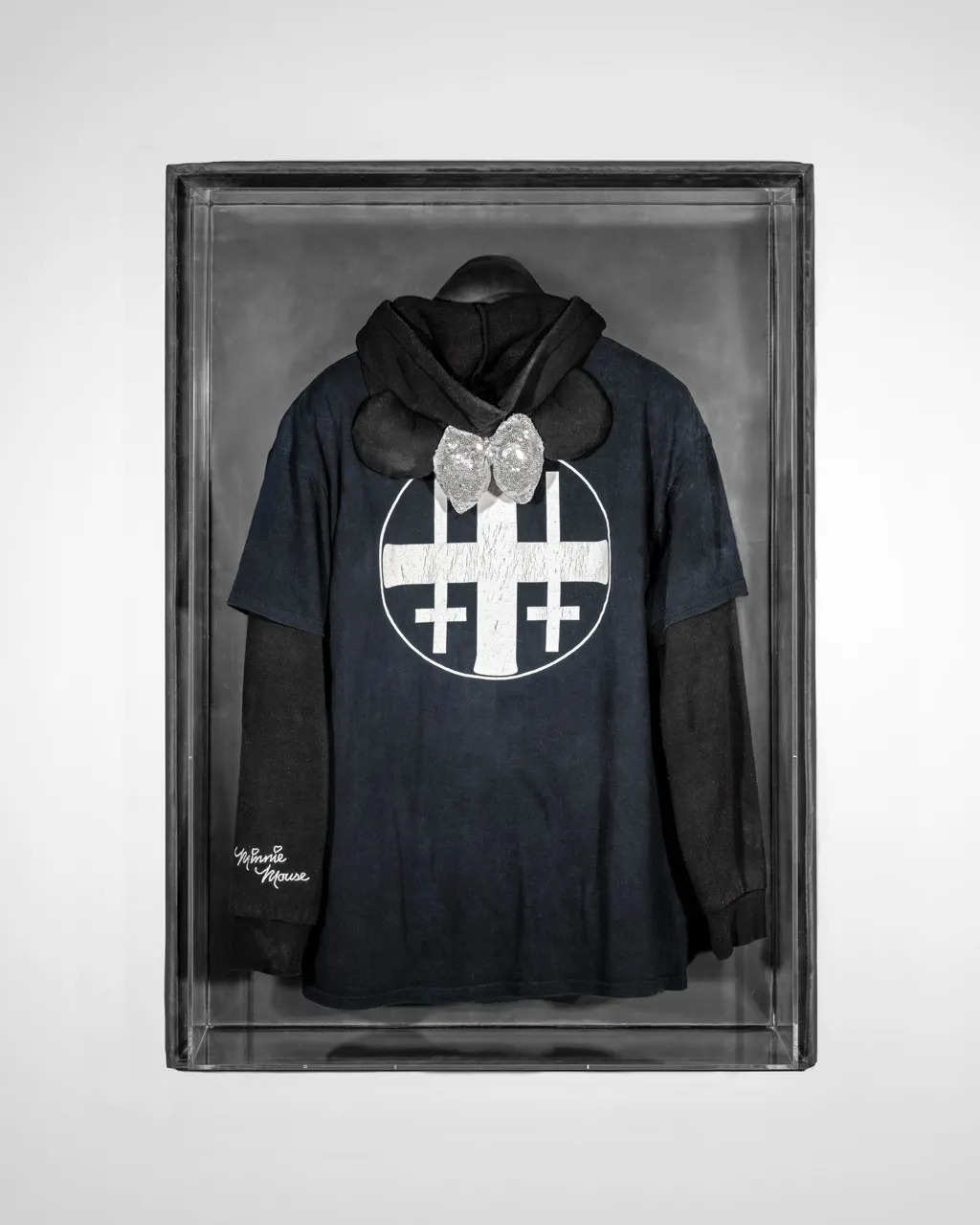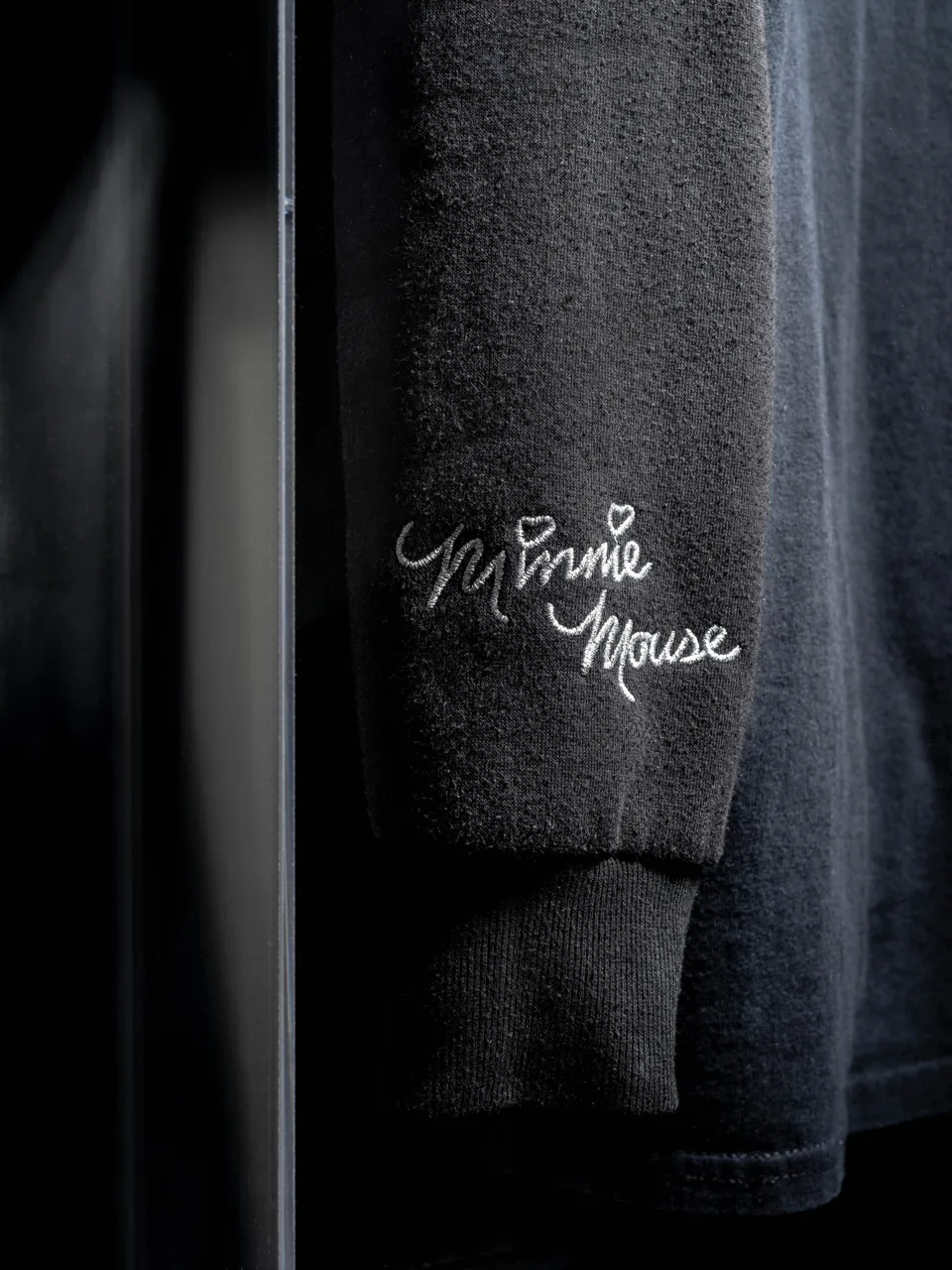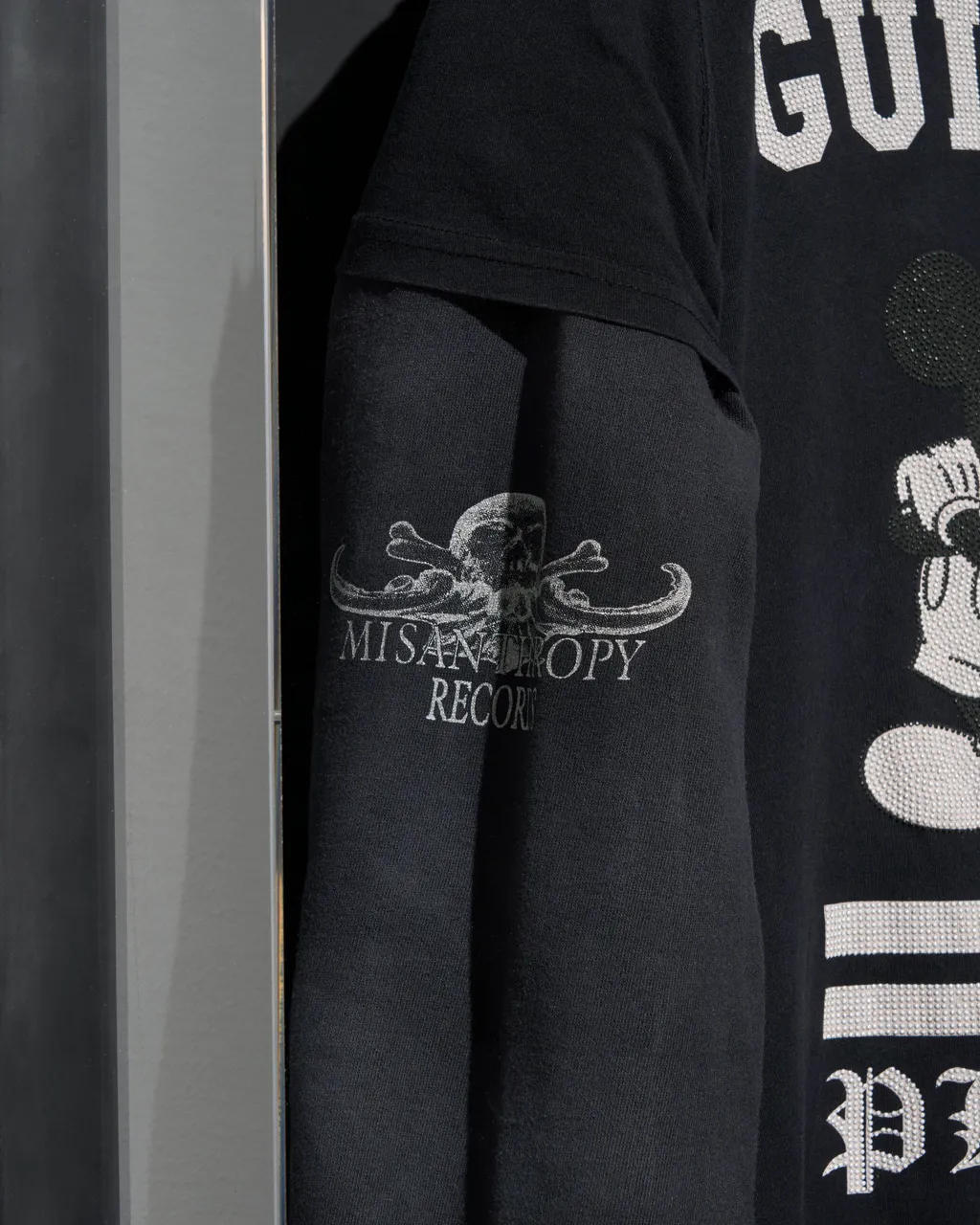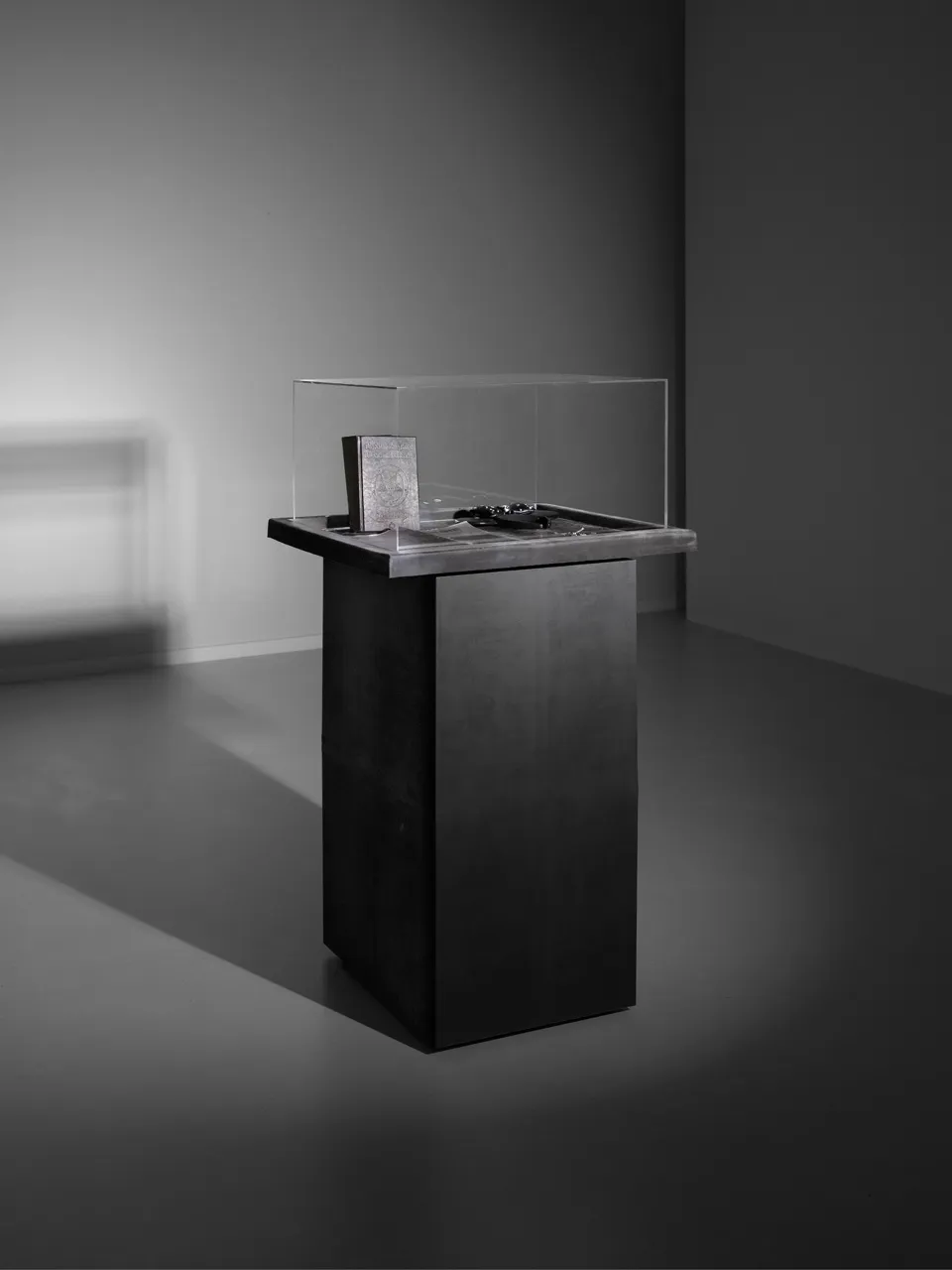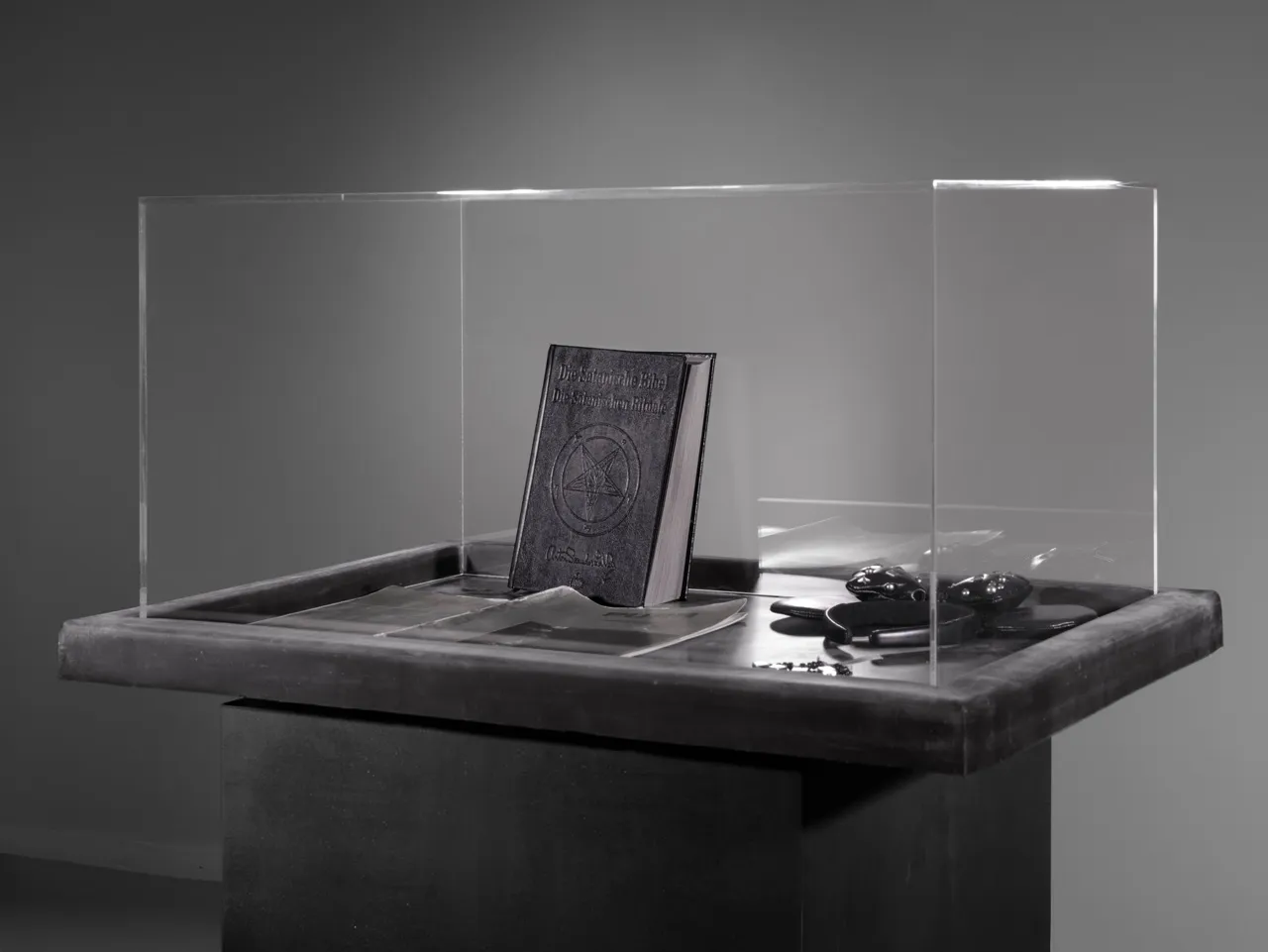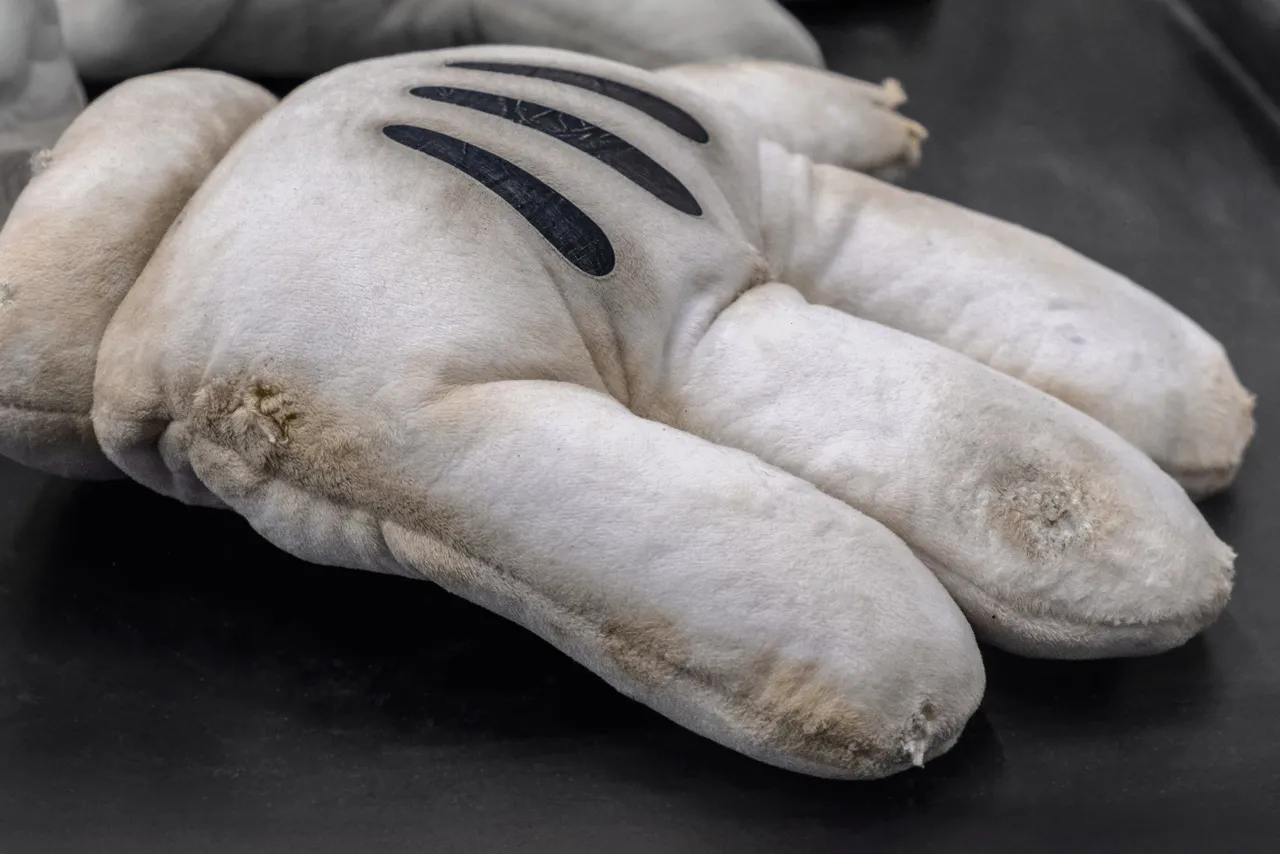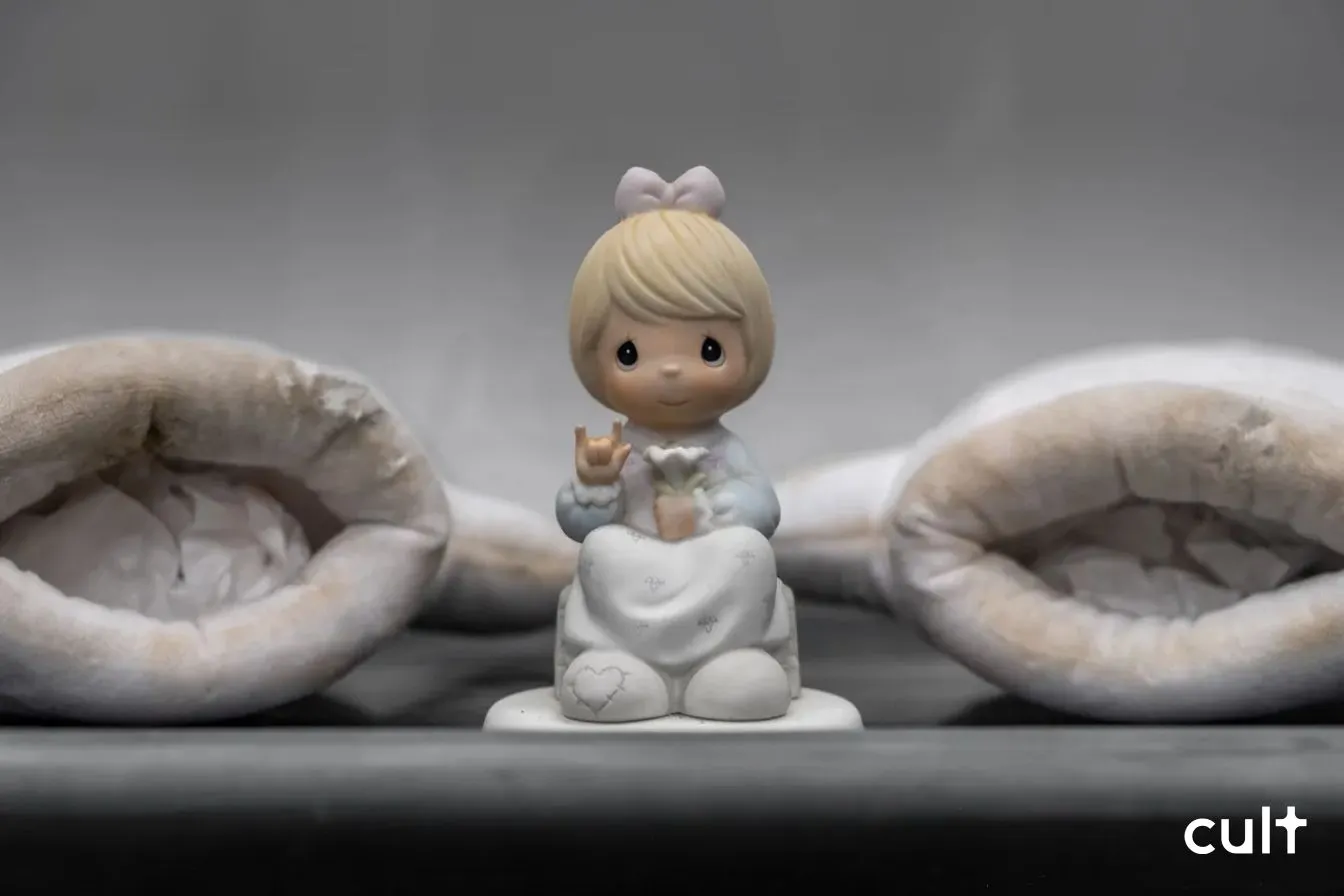At Blue Velvet Projects in Zurich, Julian-Jakob Kneer's FANATICS II unfolds as a series of clinical epiphanies—vitrine after vitrine of cultural detritus elevated to the status of forensic evidence.
The exhibition operates in the liminal space between worship and pathology, where Disney merchandise shares sacred ground with black metal paraphernalia, and Precious Moments figurines bear witness to ideological contamination.
Kneer's presentation is surgical in its precision. Each display case functions as what he terms "both shrines and crime scenes," suggesting that our relationship to pop cultural objects is simultaneously reverent and violent. The artist's methodology recalls the institutional critique of Andrea Fraser filtered through the forensic aesthetics of Thomas Hirschhorn—though where Fraser exposed the museum's complicity and Hirschhorn celebrated excess, Kneer probes the psychological substrates of fandom itself.
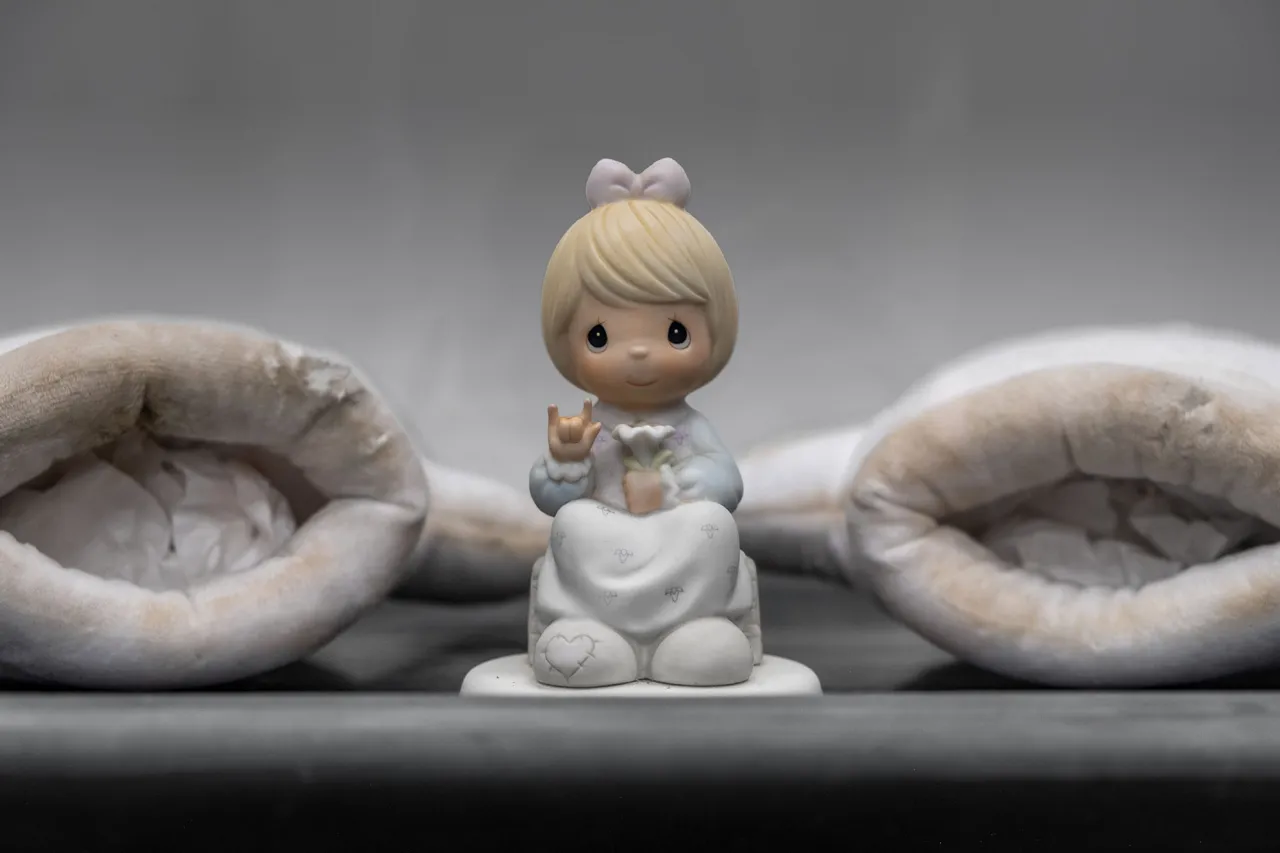
The exhibition's power lies in its refusal of moral clarity. A blonde-haired Precious Moments figurine sits nestled between oversized hands, its innocuous features rendered sinister through proximity and context. Nearby, branded clothing items hang like relics in glass cases, their commercial origins transformed into something approaching the devotional. "Meaning is not fixed; it is performed, warped, and reshaped by context," Kneer observes, and his vitrines become theaters for exactly this kind of semantic slippage.
Kneer's brilliance lies in recognizing that "supposedly opposing mythologies—childhood and cult, innocence and transgression, nostalgia and propaganda" share what he calls "structural alignment."
What emerges is a profound meditation on the mechanics of belief in late capitalism. The clinical presentation—reminiscent of natural history museums or crime scene documentation—paradoxically heightens rather than neutralizes the emotional charge of these objects. A book titled "Die Satanische Bibel" rests casually alongside other ephemera, its presence neither sensationalized nor sanitized but simply acknowledged as part of the cultural ecosystem that produces meaning through juxtaposition.
Kneer's brilliance lies in recognizing that "supposedly opposing mythologies—childhood and cult, innocence and transgression, nostalgia and propaganda" share what he calls "structural alignment." The exhibition doesn't argue for moral equivalency so much as it reveals the shared psychological architectures that underpin both Disney fandom and occult devotion. Both require surrender of critical faculties; both promise transcendence through commodity consumption; both transform ordinary objects into vessels of extraordinary meaning.

The vitrines possess the aesthetic sophistication of luxury retail displays while maintaining the conceptual rigor of institutional critique. This hybrid approach allows him to speak fluently in the visual languages of both consumption and contemplation, revealing their uncomfortable intimacies.
Each case invites what Kneer describes as "projection, discomfort, and desire—an associative zone where emotional legibility begins to blur." Standing before these displays, viewers find themselves implicated in the very systems of meaning-making the work exposes. The clinical distance promised by the museum-quality presentation collapses into something more immediate and unsettling.
FANATICS II functions as what the artist calls "an ambient exposure of destabilized belief systems."
FANATICS II functions as what the artist calls "an ambient exposure of destabilized belief systems." In an era where political allegiances increasingly resemble fan loyalties, and where consumer choices are freighted with moral significance, Kneer's work feels urgently necessary. His vitrines don't offer solutions or moral guidance—they simply create space for the contradictions inherent in contemporary cultural participation to become visible.

